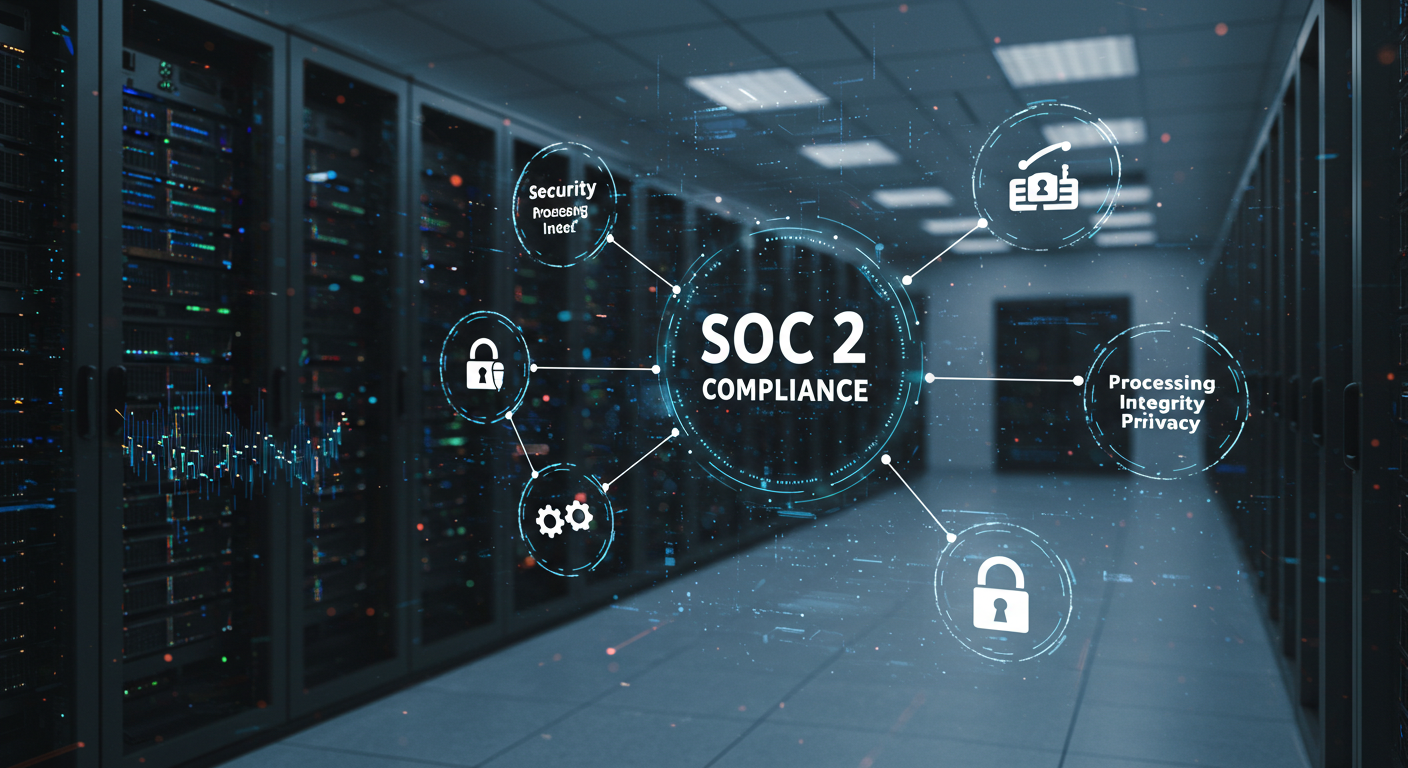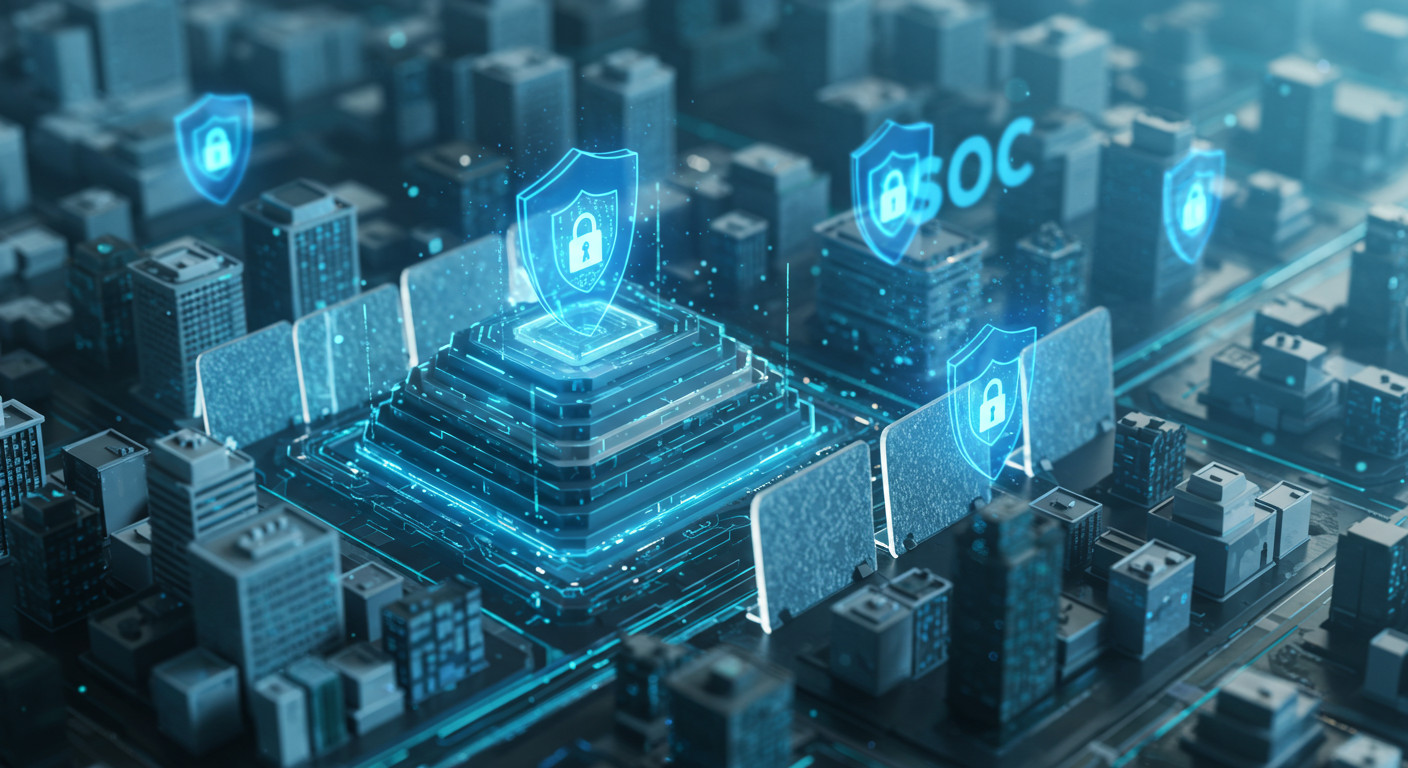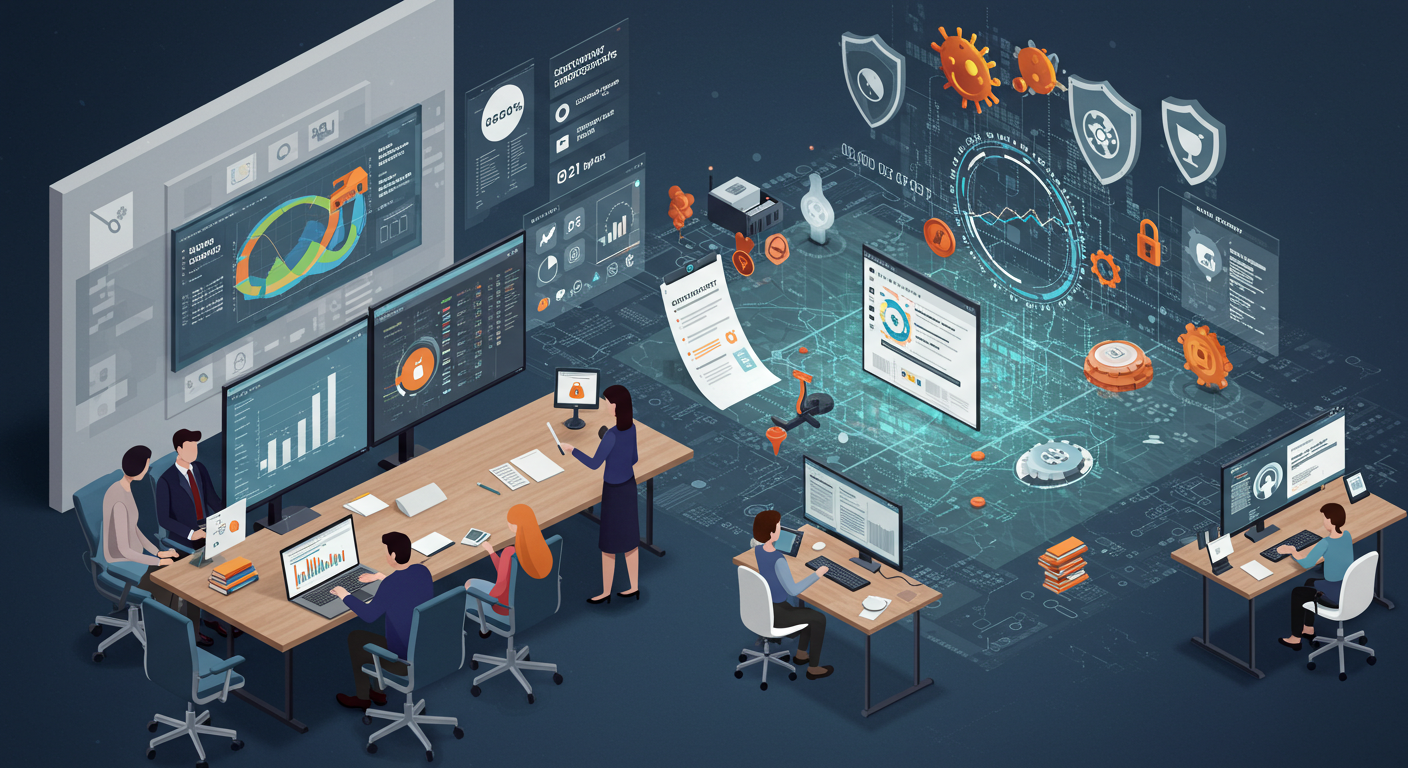SOC 2 Compliance for CEOs: What You Need to Know
For CEOs of SaaS companies and service-based tech businesses, data security is more than an IT concern—it’s a trust signal, a sales enabler, and a foundation for long-term growth. Increasingly, enterprise customers expect vendors to demonstrate clear, standardized security practices. That’s where SOC 2 comes in.
SOC 2 compliance for CEOs isn’t about learning audit jargon or managing server configurations. It’s about understanding the strategic value of a certification that speaks directly to your customers’ most pressing concerns: can they trust your business with their data?
This guide is built to explain SOC 2 in practical terms for business leaders. It covers the SOC 2 basics, key business benefits, what the audit process involves, and what CEOs can do to ensure their teams are set up for success.
For those looking to explore audit readiness or fast-track the journey, companies like BlueSteel Cyber offer tailored SOC 2 compliance services.
What Is SOC 2 and Why It Matters
SOC 2 in Plain Language
SOC 2 is a security compliance framework developed by the American Institute of Certified Public Accountants (AICPA). It’s designed specifically for service providers that store or process customer data—particularly SaaS companies, cloud services, and managed IT providers.
Rather than checking boxes for regulatory compliance, SOC 2 focuses on your organization’s controls and policies that govern how customer data is handled, accessed, stored, and protected.
At its core, SOC 2 answers a simple question: Can your business be trusted with sensitive data?
The Five Trust Services Criteria
SOC 2 audits are guided by five key areas, known as the Trust Services Criteria:
- Security – Are your systems protected against unauthorized access?
- Availability – Can customers reliably access your services when they need to?
- Processing Integrity – Do your systems process data accurately and completely?
- Confidentiality – Is sensitive information protected from unauthorized disclosure?
- Privacy – Is personal data handled in accordance with privacy policies and regulations?
Every SOC 2 audit includes the Security principle; the rest are optional, depending on your business model and customer needs.
Why Customers, Partners, and Regulators Care
SOC 2 isn’t just a formality. It’s increasingly a prerequisite for doing business—particularly in B2B markets. Customers want to know that their vendors are following industry-recognized security practices. In procurement processes, the lack of a SOC 2 report can raise red flags and slow down deals.
In some industries, regulatory agencies and partners may require vendors to demonstrate security controls. SOC 2 is widely accepted as a strong, independent validation of those controls.
Key Business Benefits of SOC 2 Compliance
Builds Trust with Prospects and Partners
Achieving SOC 2 compliance shows customers that you take data security seriously. It communicates that your organization has formal, documented controls in place to protect sensitive information. This can be especially reassuring to enterprise buyers who need to justify vendor selection to their security, legal, and compliance teams.
SOC 2 and customer trust are tightly linked. In competitive markets, having the certification gives prospects confidence in choosing your business over another.
Accelerates Sales Cycles (SOC 2 Sales Enablement)
Procurement teams often conduct rigorous security reviews before signing off on new vendors. Without a SOC 2 report, your sales team may need to fill out extensive questionnaires, provide custom documentation, or deal with extended due diligence.
With a current SOC 2 report in hand, your team can satisfy those requirements up front. This SOC 2 sales enablement dramatically reduces friction, shortens sales cycles, and can even help you close larger deals faster.
Demonstrates Operational and Security Maturity
SOC 2 compliance signals that your organization is not only secure but operationally sound. The audit process forces teams to standardize processes, define controls, and document procedures—creating a more resilient, audit-ready organization.
This kind of maturity matters to investors, board members, and potential acquirers. It reflects discipline and foresight, qualities that signal readiness for scale.
Reduces Legal, Financial, and Reputational Risks
Data breaches are not only costly but reputation-damaging. SOC 2 helps identify and close gaps in your systems and operations before they become liabilities. The process encourages regular internal reviews, role-based access controls, encryption, monitoring, and incident response planning.
While no framework guarantees immunity from incidents, SOC 2 reduces your risk and improves your ability to respond quickly and effectively.
The SOC 2 Process: What to Expect
What Goes into a SOC 2 Audit (Non-Technical Overview)
The SOC 2 audit examines your company’s systems and processes to determine whether they meet the Trust Services Criteria. A licensed CPA firm or third-party auditor performs the assessment, which typically includes:
- Documentation Review: Policies, procedures, and security controls.
- Interviews and Walkthroughs: Verifying that processes are followed.
- Evidence Collection: Screenshots, logs, and system reports to validate control effectiveness.
- Reporting: A formal SOC 2 report detailing findings, strengths, and any issues.
This is less about passing or failing and more about identifying and improving areas that impact customer data and system security.
Type I vs. Type II Explained for CEOs
There are two types of SOC 2 reports:
- Type I assesses whether your controls are properly designed at a single point in time.
- Type II tests whether those controls are operating effectively over a period (typically 3–12 months).
Most customers, especially in enterprise and regulated sectors, expect a Type II report. It provides stronger assurance that your controls are consistently followed.
Timeline and Team Involvement
Preparation and readiness can take 3–6 months, depending on the maturity of your controls. A Type II audit typically covers a 6–12 month period after that.
Key stakeholders include:
- Security and IT teams to implement and maintain controls.
- Operations and engineering for access management and monitoring.
- Leadership for policy development and oversight.
- Outside consultants or firms like BlueSteel Cyber that offer turnkey SOC 2 compliance services.
The CEO’s role is less hands-on, but essential for aligning priorities and resources.
How CEOs Can Support SOC 2 Success
Establishing a Culture of Security and Compliance
SOC 2 compliance starts at the top. If the executive team treats compliance as a checkbox, the rest of the company will too. But when CEOs prioritize security and model good practices, it reinforces a culture of ownership and accountability.
This cultural buy-in is critical to ensuring SOC 2 isn’t just a one-time project but an ongoing business capability.
Making Compliance a Strategic Priority
SOC 2 doesn’t just protect data—it supports growth. CEOs should view compliance as a revenue enabler and allocate budget, time, and team bandwidth accordingly.
This means:
- Building compliance milestones into product and go-to-market plans.
- Allocating resources to support audit readiness and maintenance.
- Ensuring leadership alignment across legal, IT, ops, and sales.
Enabling Security and Ops Teams with Resources
Achieving SOC 2 often requires implementing or improving internal tooling, access controls, monitoring systems, and documentation. CEOs can empower teams by investing in modern tools and services that simplify these tasks.
This may include:
- Compliance automation platforms
- Centralized policy management systems
- Dedicated staff or external consultants for audit prep
SOC 2 certification benefits multiply when teams have the right support to implement lasting change.
SOC 2 as a Strategic Advantage
How to Use SOC 2 as a Competitive Differentiator
SOC 2 isn’t just about passing audits—it’s a brand advantage. Companies that achieve SOC 2 can differentiate themselves by proactively sharing their commitment to security.
In a market where buyers are overwhelmed with options, being transparent about your security practices builds trust and sets you apart.
Talking Points for Customers and Prospects
Equip your sales and customer-facing teams with language that positions SOC 2 as a trust signal:
- “We’ve completed a SOC 2 Type II audit, demonstrating our commitment to protecting your data.”
- “Our security practices are independently verified against industry standards.”
- “We maintain continuous monitoring and annual re-audits to ensure our controls stay effective.”
These statements move prospects through the funnel faster and with fewer objections.
Building Long-Term Trust Beyond the Audit
SOC 2 is a moment in time. Maintaining it requires continuous improvement. CEOs should treat the post-audit period as an opportunity to expand security initiatives, review metrics, and update policies.
Consider pairing SOC 2 with additional frameworks—like ISO 27001 or HIPAA—as your business grows.
Conclusion
SOC 2 compliance for CEOs isn’t about ticking a box. It’s about building a company that customers trust, sales teams can confidently represent, and investors see as ready for scale.
It’s a sign of operational maturity, a competitive edge in the market, and a defense against growing security risks.
For CEOs looking to take the first step, start by aligning your leadership team, choosing experienced partners, and making SOC 2 a strategic priority. You can begin by exploring BlueSteel Cyber’s SOC 2 compliance services or reaching out to contact BlueSteel for a consultation.
SOC 2 is more than a security framework. It’s a commitment to your customers—and a signal that your business is built to last.







